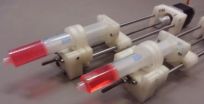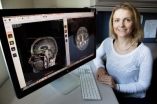(Press-News.org) Historically, spaceflight has been reserved for the very healthy. Astronauts are selected for their ability to meet the highest physical and psychological standards to prepare them for any unknown challenges. However, with the advent of commercial spaceflight, average people can now fly for enjoyment. The aerospace medicine community has had very little information about what medical conditions or diseases should be considered particularly risky in the spaceflight environment, as most medical conditions have never been studied for risk in space — until now.
The aerospace medicine group at the University of Texas Medical Branch at Galveston recently studied how average people with common medical problems — high blood pressure, heart disease, diabetes, lung diseases like asthma or emphysema and back and neck injuries, surgeries or disorders — would be able to tolerate the stresses of commercial spaceflight. Overall, they found that nearly everyone with well-controlled medical conditions who participated in this project tolerated simulated flight without problems. The study can be found in the journal Aviation, Space and Environmental Medicine.
"Physiological stresses of flight include increased acceleration forces, or 'G-forces,' during launch and re-entry, as well as the microgravity period," said lead author Dr. Rebecca Blue. "Our goal was to see how average people with common medical problems, who aren't necessarily as fit as a career astronaut, would be able to tolerate these stresses of an anticipated commercial spaceflight."
Some medical conditions are of particular interest within the commercial spaceflight industry, either because of the high rate of occurrence or because of the potential to cause sudden, serious medical events. The researchers studied how people with these common conditions performed when put through centrifuge simulations of spaceflight launch and re-entry.
The centrifuge allows researchers to mimic the acceleration of a rocket launch or of a spacecraft re-entering through the atmosphere. Astronauts regularly use centrifuges to train for their own spaceflights. The acceleration forces expected in a commercial spaceflight profile are tolerable, but can be uncomfortable, for healthy individuals. The researchers wanted to see if they were equally tolerable for individuals with complex medical histories or whether there were certain conditions that would make it more difficult for them to handle the flight.
"This study further supports the belief that, despite significant chronic medical conditions, the dream of spaceflight is one that most people can achieve," said Blue.
INFORMATION:
Other authors of this paper include James Pattarini, David Reyes, Robert Mulcahy, Charles Mathers, Johnené Vardiman, Tarah Castleberry and James Vanderploeg of UTMB and Alejandro Garbino of Baylor College of Medicine.
This research was supported by the Federal Aviation Administration's Center of Excellence for Commercial Space Transportation, which has designated UTMB's aerospace medicine group as a leader in research for the commercial spaceflight industry. The goal of the UTMB group is to identify the knowledge gaps regarding commercial spaceflight and to address these gaps with research to allow for science-based decision-making within the field. The team also had support from the National Space Biomedical Research Institute to complete this work.
Space: The final frontier… open to the public
UTMB research shows average people healthy enough for commercial space travel
2014-09-17
ELSE PRESS RELEASES FROM THIS DATE:
NASA releases IRIS footage of X-class flare
2014-09-17
On Sept. 10, 2014, NASA's newest solar observatory, the Interface Region Imaging Spectrograph, or IRIS, mission joined other telescopes to witness an X-class flare – an example of one of the strongest solar flares -- on the sun. Combing observations from more than one telescope helps create a much more complete picture of such events on our closest star. Watch the movie to see how the flare appears different through the eyes of IRIS than it does through NASA's Solar Dynamics Observatory.
The movie shows IRIS imagery focused in on material at around 60,000 Kelvin (107,500 ...
Power isn't enough: Study reveals the missing link for effective leadership
2014-09-17
NEW YORK—With the National Football League in full damage-control mode, there are many questions about how the NFL's leader handled the Ray Rice case. Was Goodell ignoring the pleas of stakeholders—former NFL players, the media and domestic violence groups—when deciding on a two game penalty? The answer may lie in a study out today by Columbia Business School.
The research, just published in Social Psychological and Personality Science, finds that leaders who fail to take into account their audiences' perspective have a far greater propensity to bungle the issue and conversation. ...
Reducing traffic congestion with wireless system
2014-09-17
At the Intelligent Transportation Systems World Congress last week, MIT researchers received one of the best-paper awards for a new system, dubbed RoadRunner, that uses GPS-style turn-by-turn directions to route drivers around congested roadways.
In simulations using data supplied by Singapore's Land Transit Authority, the researchers compared their system to one currently in use in Singapore, which charges drivers with dashboard-mounted transponders a toll for entering congested areas.
The Singapore system gauges drivers' locations with radio transmitters mounted on ...
NASA sees Odile soaking Mexico and southwestern US
2014-09-17
Tropical Storm Odile continues to spread moisture and generate strong thunderstorms with heavy rainfall over northern Mexico's mainland and the Baja California as well as the southwestern U.S. NASA's Tropical Rainfall Measuring Mission or TRMM satellite measured rainfall rates from space as it passed over Odile.
Odile had weakened to a tropical storm with winds of about 55 knots (63.3 mph) when the TRMM satellite flew over on September 16, 2014 at 0917 UTC (2:19 a.m. PDT). Odile was still well organized and TRMM's Precipitation Radar (PR) measured rain falling at a rate ...
Doing science just got cheaper -- and faster
2014-09-17
Furnishing a research lab can be pretty expensive. Now a team led by an engineer at Michigan Technological University has published an open-source library of designs that will let scientists slash the cost of one commonly used piece of equipment: the syringe pump.
Syringe pumps are used to dispatch precise amounts of liquid, as for drug delivery or mixing chemicals in a reaction. They can also cost hundreds or even thousands of dollars.
Joshua Pearce and his team of Michigan Tech students published the library of free syringe-pump designs, which anyone can make on a ...
The future of global agriculture may include new land, fewer harvests
2014-09-17
Climate change may expand suitable cropland, particularly in the Northern high latitudes, but tropical regions may becoming decreasingly suitable, according to a study published September 17, 2014 in the open-access journal PLOS ONE by Florian Zabel from Ludwig Maximilians University, Germany and colleagues.
Most of the Earth's accessible agricultural land are already under cultivation. Ecological factors such as climate, soil quality, water supply and topography determine the suitability of land for agriculture. Climate change may impact global agriculture, but some ...
Nemo's epic journey to find a new home
2014-09-17
New research has found clownfish larvae can swim up to 400 kilometres in search of a home, which makes them better able to cope with environmental change.
Clownfish spend their entire adult lives under the protection of their host anemone but as babies they must wander the open ocean, says study co-author, Dr Hugo Harrison from the ARC Centre of Excellence for Coral Reef Studies (Coral CoE) at James Cook University.
"In the past we haven't known where they go, but now we've been given a rare glimpse into how far they can swim, crossing large tracts of ocean to find ...
Blood test could identify when cancer treatment has become detrimental
2014-09-17
Some treatments for prostate cancer, while initially effective at controlling the disease, not only stop working over time but actually start driving tumour growth, a major new study shows.
Researchers identified the emergence of drug-resistant cancer cells by testing repeated blood samples from patients with advanced prostate cancer.
They set out a new 'treatment paradigm' – the constant monitoring of patients using a blood test for signs that therapy is becoming counter-productive.
The study was conducted at The Institute of Cancer Research, London, The Royal Marsden ...
Expedition finds Nemo can travel great distances to connect populations
2014-09-17
Clownfish spend their entire lives nestling in the protective tentacles of host anemones, but new research shows that as babies they sometimes travel hundreds of kilometres across the open ocean. Although the process of long-distance dispersal by reef fish has been predicted, this is the first time that the high level exchange of offspring between distant populations has been observed.
Dr Steve Simpson, Senior Lecturer in Marine Biology and Global Change at the University of Exeter, and colleagues from the Australian Research Council Centre of Excellence for Coral Reef ...
Study links physical activity in older adults to brain white-matter integrity
2014-09-17
CHAMPAIGN, Ill. — Like everything else in the body, the white-matter fibers that allow communication between brain regions also decline with age. In a new study, researchers found a strong association between the structural integrity of these white-matter tracts and an older person's level of daily activity – not just the degree to which the person engaged in moderate or vigorous exercise, but also whether he or she was sedentary the rest of the time.
The study, reported in the journal PLOS ONE, tracked physical activity in 88 healthy but "low-fit" participants aged 60 ...
LAST 30 PRESS RELEASES:
University of Oklahoma researcher awarded funding to pursue AI-powered material design
Exploring how the visual system recovers following injury
Support for parents with infants at pediatric check-ups leads to better reading and math skills in elementary school
Kids’ behavioral health is a growing share of family health costs
Day & night: Cancer disrupts the brain’s natural rhythm
COVID-19 vaccination significantly reduces risk to pregnant women and baby
The role of vaccination in maternal and perinatal outcomes associated with COVID-19 in pregnancy
Mayo Clinic smartwatch system helps parents shorten and defuse children's severe tantrums early
Behavioral health spending spikes to 40% of all children’s health expenditures, nearly doubling in a decade
Digital cognitive behavioral treatment for generalized anxiety disorder
Expenditures for pediatric behavioral health care over time and estimated family financial burden
Air conditioning in nursing homes and mortality during extreme heat
The Alps to lose a record number of glaciers in the next decade
What makes a good proton conductor?
New science reporting guide published for journalists in Bulgaria
New international study reveals major survival gaps among children with cancer
New science reporting guide published for journalists in Turkey
Scientists develop a smarter mRNA therapy that knows which cells to target
Neuroanatomy-informed brain–machine hybrid intelligence for robust acoustic target detection
Eight SwRI hydrogen projects funded by ENERGYWERX
The Lundquist Institute and its start-up company Vitalex Biosciences Announces Strategic Advancement of Second-Generation fungal Vaccine VXV-01 through Phase 1 Trials under $40 Million Competitive Con
Fine particles in pollution are associated with early signs of autoimmune disease
Review article | Towards a Global Ground-Based Earth Observatory (GGBEO): Leveraging existing systems and networks
Penn and UMich create world’s smallest programmable, autonomous robots
Cleveland researchers launch first major study to address ‘hidden performance killer’ in athletes
To connect across politics, try saying what you oppose
Modulating key interaction prevents virus from entering cells
Project explores barriers to NHS career progression facing international medical graduates
Jeonbuk National University researchers explore the impact of different seasonings on the flavor perception of Doenjang soup
Two Keck Medicine of USC Hospitals named Leapfrog Top Teaching Hospitals
[Press-News.org] Space: The final frontier… open to the publicUTMB research shows average people healthy enough for commercial space travel



